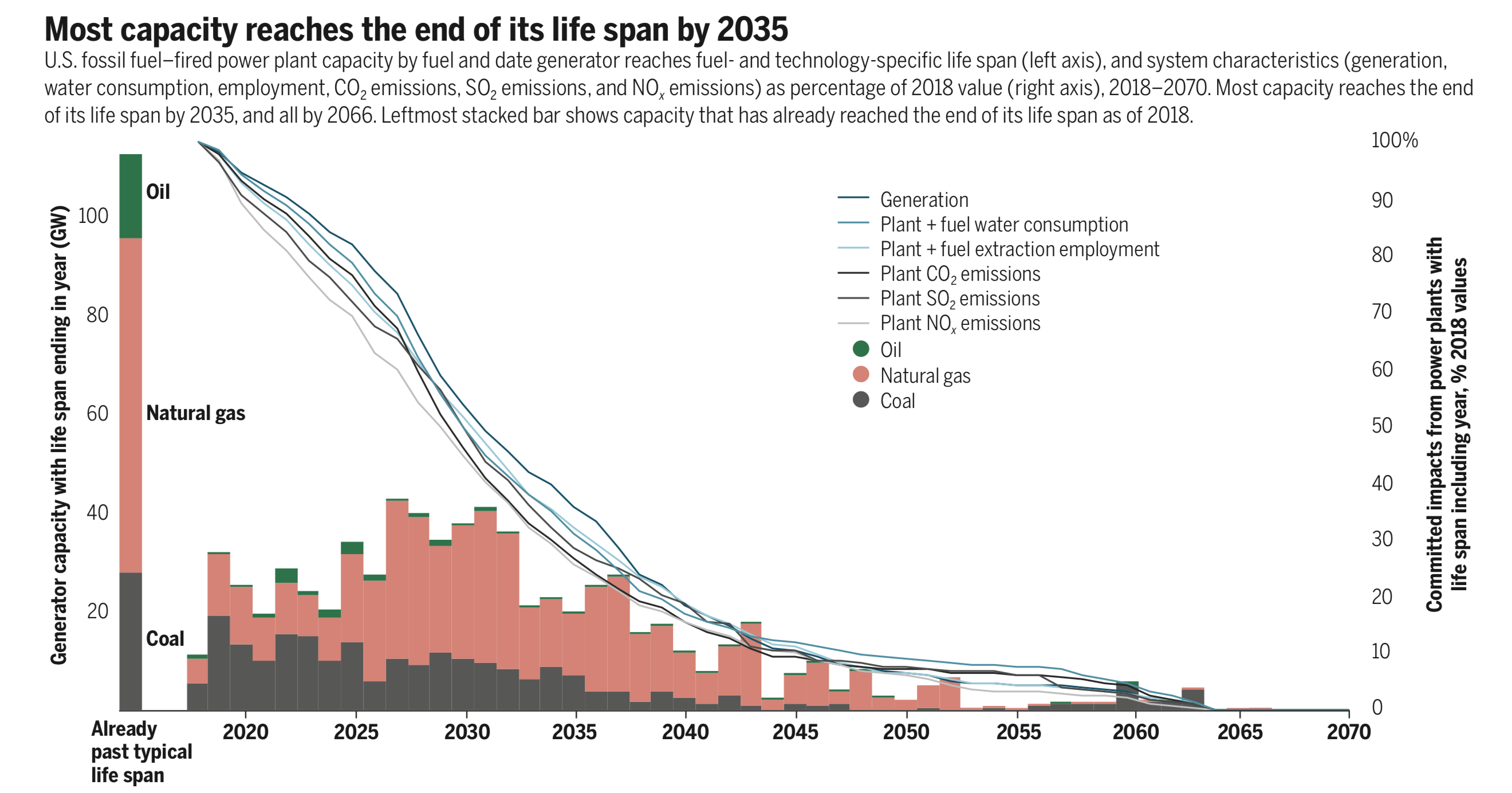The transition to 100% clean electricity will take a lot of things — organising, political will, courage. But fundamentally, if we can get all of that together, it will practically require two components. One is deploying a shitload of renewable energy, and the other is shutting down all of the existing fossil fuel-based power we have. Both will come with hefty price tags, but will be more than worth it since the cost of inaction is massive. And it turns out that the latter may be cheaper than previously expected.
A new study published in Science on Thursday examines the requirements for phasing out dirty power to meet the goal of 100% clean electricity by 2035, set by President-elect Joe Biden. The analysis examined the nation’s roughly 10,500 fossil-powered generators at 2,981 power plants — which in 2018 produced some 841 gigawatts, or more than 60% of domestic energy used — to see how much more life they have left, based on historical data on each type of technology. It found that the majority of U.S. power plants are old and falling into disrepair. Many, in fact, are already being retired. Between 2009 and 2018, 126 gigawatts of oil, gas, and coal capacity were taken out of production. That includes 33 gigawatts of capacity in 2017 and 2018 alone because the plants were too old to function properly and repairs are expensive. All told, 7,891 generators, or 75% of fossil fuel power generators will reach the end of their life expectancies before 2035.

The study then compares that data to the timeline on which power generators will need to be phased out to meet the 2035 goal. It found that doing so would only eliminate 15% of the time they’d have left in operation if no climate plans were put into place. The findings fly in the face of assertions from many clean energy naysayers, who have argued that energy customers will bear a huge burden if power plants are closed early to meet climate goals.
“These findings are important because they contextualize stranding based on how long the assets might reasonably have been expected to operate,” Emily Grubert, a Georgia Institute of Technology researcher who authored the new report, said. “Understanding a typical lifespan is important for understanding how much value is being lost when a plant closes. There’s probably not a great argument that the public should pay plant owners the cost of a brand new plant if the plant was already 5 years older than one might have expected it to last when it opened. Based on the way people talk about asset stranding, the numbers are lower than expected.”
That’s important because it shows that stranded assets won’t actually cost the U.S. or rate payers much money. There also wouldn’t be much labour lost by retiring plants early. Assuming a minimum of 10 people would work on every plant until it is fully shuttered, Grubert found that the plants would create 20% fewer hours of labour. This finding, Grubert said, “helps show that announcing a plant closure 10 years out, with time to plan for what’s next, might not always come with ‘early’ closure.”
The study emphasises the importance of those closure plans, which should take care of laid off workers by retraining them and readying them for new positions in other industries, including clean energy. Planning is also important for the well-being of communities who currently depend on revenue from the fossil fuel industry. In other words, we need to plan for both workers and communities to have a just transition.
“Closure without planning is likely to be a disaster, both for continuity of providing electricity and for people and communities that host these facilities,” Grubert said. “The fact that these plants are pretty old means closure in general is probably less disruptive than we might have thought, but we need to seize the opportunity to actually plan what comes next. We talk a lot about building new systems that are zero carbon, and less about how we close the carbon-based assets. We really need to have that conversation, both for host communities and workers and also because we need to make sure the transition is coordinated.”
Editor’s Note: Release dates within this article are based in the U.S., but will be updated with local Australian dates as soon as we know more.
